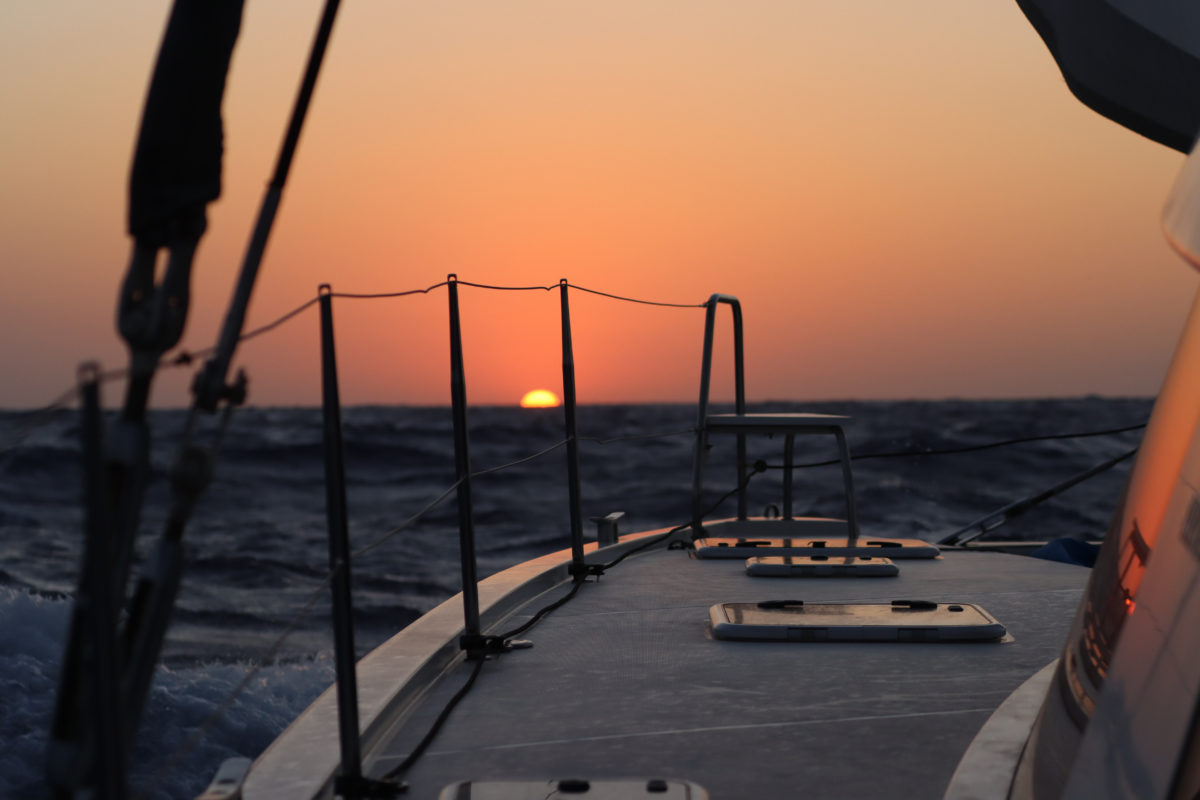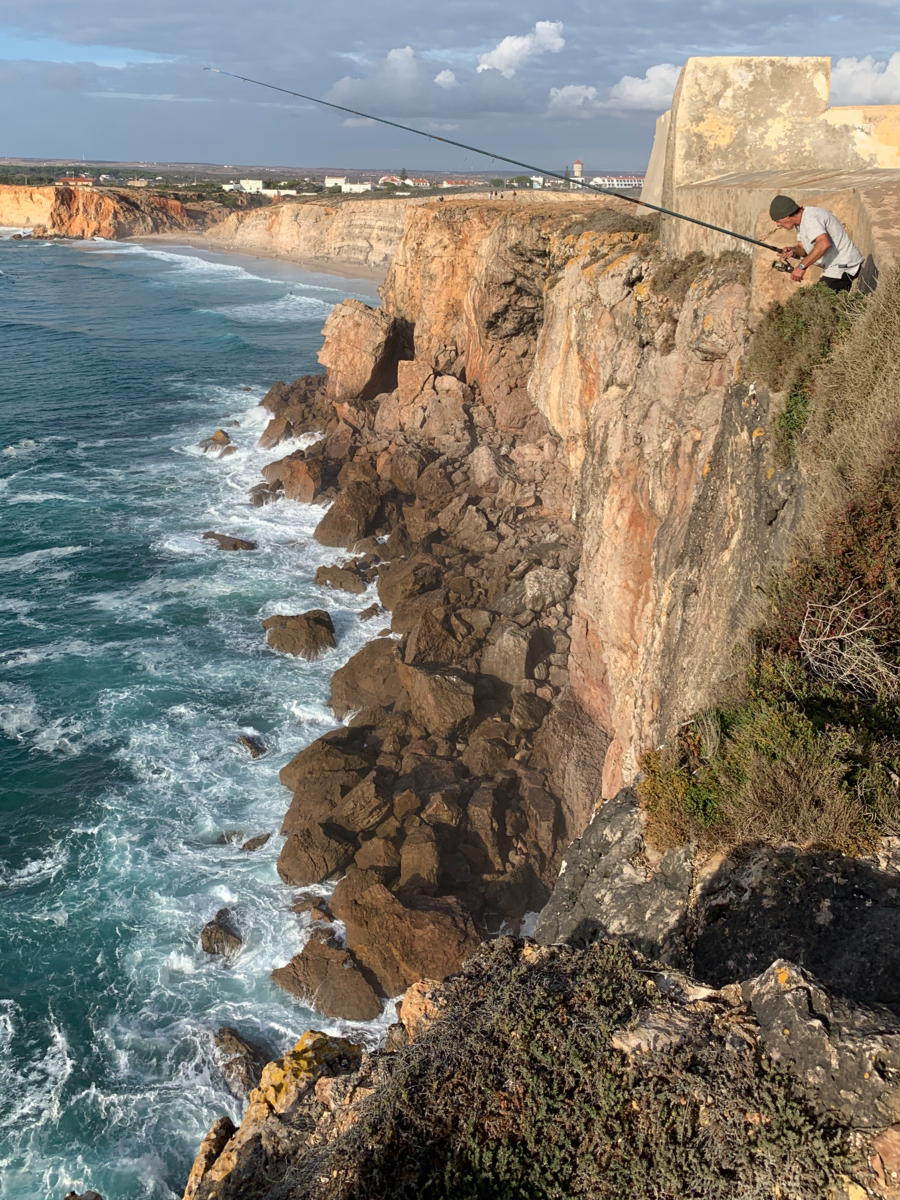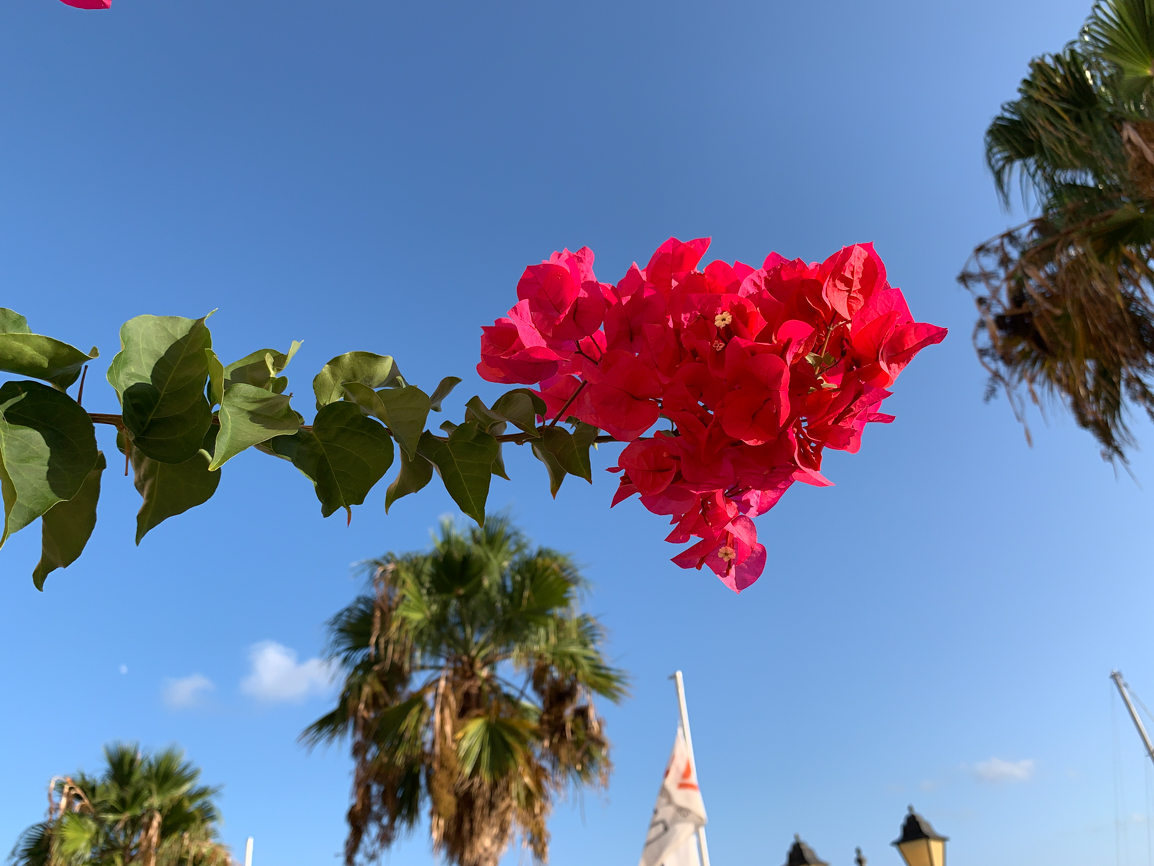August 26 to September 1
From Almerimar to Isola di San Pietro, Sardinia (Italy)

We flipped the coin and lost
Sailing from Portugal to Italy, we had two Covid-19 related choices. Stopover in Gibraltar, avoiding Spain. Or stopover in Spain, avoiding Gibraltar. We couldn’t get information on how Italy would treat travellers coming from either departure point. Gibraltar, being part of the UK, could have been red listed by Italy like the mainland UK is. Spain showed fast rising Covid-19 cases. Hmmm!
We choose Spain, which offered us a second rest stop in Almerimar. And we lost.
Don’t follow our moves at the Roulette table!
Weather
On August 26, the weather looked promising for our next leg sailing the 860nm to Sicily. We had a weather window beginning with no wind and later featuring favourable westerlies along the Algerian coast. We had some contingency planning in mind for the strait between Tunisia and Sicily. At our targeted passage time, remnants of a Mistral with unstable weather could be there. We planned to go slow and let it pass in front of us. We’ll see later how that went. Alternatively: ask the Admiral 🙁

August 26
It was stressful to get all the things lined up for our departure to Tunisia. Food shopping, health test, emailing back and forth with contacts in Tunisia. We tried to get a Covid-19 test prior to our departure for Tunisia, which was beyond all the normal preparation required for a longer voyage. Because of the rise in cases in Spain, we were told testing chemicals are running low in Almeria, where the next lab was located. This meant we would get test results in 5 days, or maybe even later. In Tunisia we have to show results 72 hours old or newer. The 72 hours was either way going to be a challenge. Then Tunisia made a soft close for travelers coming from Spain. We decided to sail to Southern Sicily, which is close to Tunisia and sort things out there, and going into quarantine in Italy.
August 27
We left early morning with no wind. Goodbye to the neighbouring catamaran from Denmark and heading over to the fuel dock. Docking in no wind is so much smoother 🙂
Motoring Northeast along the Spanish coast to catch some wind and getting a little push from a current. We are having a long stretch ahead of us and go on the watch cycle right away after clearing up the boat.
During the night the VHF radio is chatty like never before. For one there seemed to be a favorable reception for stations from far away and second, several smaller migrant boats had left Algeria heading to Spain. Constant PAN-PAN messages from several Spanish coastal stations alert sailors to lookout and report sightings. Also, we heard a radio spat between the Spanish Navy asking an Algerian military vessel what they were doing in their waters. Later in the night we hear a vessel identifying itself as ‘coalition forces’ vessel (with American accent) reporting a small drifting boat in the area of Tunis (many 100s of miles ahead of us)
AIS signals are on a similar radio band like our VHF radio. For nearly a day, we saw vessels moving on our chart plotter up to 400nm away. Never have seen something like that before.

The Sierra Nevada in the picture below visible from far offshore.

Most commercial vessels are very considerate towards sailing vessels. On high seas they have room to maneuver and use it. If we and another ship sail on converging lines, the commercial vessel changes course 30 – 60 minutes before we would get too close. Sometimes they call us on the VHF radio to communicate their intentions. Or we call them and find them helpful changing their course for us. Deep downwind or tacking upwind, our room for gradual course changes is only to one side. At 2200h we had the first time a vessel which did not react to repeated radio calls on Channel 16 or 06 (Intership Safety channel).

Developing. Not so many options for us. We couldn’t turn into oncoming traffic. 
A bit later. Too close at night.
Here we started the engines to be prepared and took evasive action. Otherwise we could have smelled what they were cooking in the galley 🙁
August 28
Morning: By this time we slowly had settled into our watch routine. The first days are always tiring. With a crew of two and pleasant weather we favor 4 hour on and off watch cycles during a 24-hour period. At 10:00 in the morning, we insert two 2 hour watches to break the cycle. This ensures that no one gets the midnight shift every night. (1800 to 2200h, 2200 to 0200h, 0200 to 0600, 0600 to 1000, 1000 to 1200, 1200 to 1400, 1400 to 1800)
After day 3 it seems the body adjusts and we become less tired during the day. At the beginning, we rarely read or do any other things than ship duties. Day 4 and onward life becomes more enjoyable. The spirits improve. We have settled into the watch cycle-life. A crew of 3+ seems ideal to us. Everyone gets at night a 8 hour block of uninterrupted sleep – except the captain sometimes.
We hoisted the Genaker in the receding wind and left it up until late afternoon. Wonderful sailing.
Running the Starboard engine at sunset, we discovered that the alternator was not charging. I could not find the source of the problem. Not good! The 220V charger for the engine batteries constantly charges at full capacity. Where is all the juice going? The engine battery charger gets its power from the 12V house battery via a Victron 5kW inverter. The engine batteries are full. Somehow it must go back to the 12V circuit. Here, it becomes interesting: when we switch the engine master switches ON; the charger stops charging and the voltage at the engine batteries rises to 13.4V. This is exactly the voltage of our house battery. It seems we still have somewhere a crossover between house and engine batteries. This is an old argument and apparently still ongoing between us and the electrical installer in La Rochelle, France.
August 29
We are now closer to the Algerian coast, keeping a healthy distance north of their 12nm exclusion zone. Beautiful sailing with the wind from behind.
The Barometer is dropping during the last 36hours

We reef further down at midnight, preparing for strengthening winds. As usual when we reef the wind speed drops right away and I felt like a fool for an hour. Gladly we reefed. The winds freshened to 25 to 30kts in gusts blowing from 235° nearly perfect for us heading East. Predictwind was as helpful and precise as always with their weather predictions.
In the morning time, we had following seas which made us surf several times. We tried to keep the boat slow by rolling the genoa beyond the third reef point and sailing with a 2nd reef in the main which in our case cuts the sail area in half. After sunrise we had a large wave surfing us for a long stretch at over 16kts. I must be getting older, I don’t like this speed in a larger boat 🙁


We are close to Africa and our deck looks like the Sahara to the south of us. Sometime, during the night, we must have sailed through a dust cloud.

Sahara onboard 
Side-note: The next night when heading north, we sailed through the same dust again. We got loaded with another round of dirt.
August 30 and 31
Anytime my logbook entries get short and scarce, it’s not funny sailing anymore. By now the generator failed to charge. We are down to one alternator charging the batteries. If this one fails…. not good! The wind picked up. We had already changed course 20° further north to delay the time when we would enter the straits between Tunisia and Sicily. Predictwind models estimated gusts of 50kts. In our experience, this could mean even more. By now we encounter two wave systems. Strong following waves from the West and a 7s period set from the Northeast, the extension from a distant Mistral which moves south in front of us. The Admiral doesn’t like the sunset or anyone else or food 🙁
We decide to head for an alternate port in Sardinia 110nm to the north, sorting things out there. We had researched pre-departure, in Almerimar, anchorages and Marinas in the south of Sardinia – just in case. We contacted our friends on ‘Petit Jolie‘ per Satellite phone to check out facilities on a small island on the southwestern tip of Sardinia, which was closer to us.
The alternate destination meant changing course further north against the wind. 110nm to go. Conditions became rough with 35kts tacking upwind, a south setting current and short choppy seas. The front windows leak again heavily (known issue on many Nautitech’s). Isola di San Pietro must be beautiful! We are dodging thunderstorms in the night, estimating their location with the CAPE map predictions (yes, Predictwind again) and our radar. We seem to have done well as we see lightning mostly far away. Except for one moment, when our electronics rebooted. We might have sailed into a strong electromagnetic field, but did not see any lightning at the time. We encountered a hail-shower, which made me fear for our chart plotters outside. I donned a pillow over my head for protection and put the plastic covers on the plotters. The hail hurt. Next purchase is a helmet!
At sunrise I am dog-tired. I had only minor breaks during the last 36 hours. The poor Admiral has to go on watch. Heroically, she steps up to do her duties. I know how miserable she feels, but we also have to balance risks. We consider deep tiredness a serious risk factor contributing to bad decision making and moving insecurely on deck.
Between 0630 and 0730h, it’s all gone. The wind recedes to 10kts. The sun comes out and in the south we can see the cold front which had made our life so miserable. In the photo, it looks pleasant.

The Admiral disagrees about my nice weather statement as the waves still shake us. I sense the wind and wave shadow from the island in the distant north of us and eagerly enter the last waypoints meandering between the islands to the Marina in Carloforte.
Approaching the port we saw some bright turquoise shine in the water. Rocks in 3 meters depth. We changed course and follow a ferry into port. The locals must know better what they are doing than Navionics. At 1400h we dock with Marine Sifredi. Nice and easy having a great place at the quay directly facing the village. This should be our view for the coming days as we go into quarantine immediately as expected. (Which is over by the time I am writing this.)

The marina management team Carmela and Giusi are super. Both speak English well, are forward coming and communicate. The first evening they ordered pizza from a local pizzeria for us, which the young marina assistant delivered.

We repaired the alternator and generator issue. The front windows are on our winter to do list when we are in Ragusa. A Happy End as always.
PS:
In my anger about our electrical installation and to blow off some steam I wrote a ‘glowing’ biography for the electrical artist in France – enjoy:
Lunara’s electrician’s extensive work is grounded in concepts of electricity, social philosophy and colorful explanations; it culminates in his “extended definition of electricity” and the idea of electrical sculpture as a gesamtkunstwerk, for which our French Electrician claimed a creative, participatory role in shaping society and electrical works. Lunara’s electrician’s career was characterized by open public debates on a very wide range of subjects including electrical, social and long term cultural trends. The French Electrician is widely regarded as one of the most influential electricians of the first half of the 21st century.







































